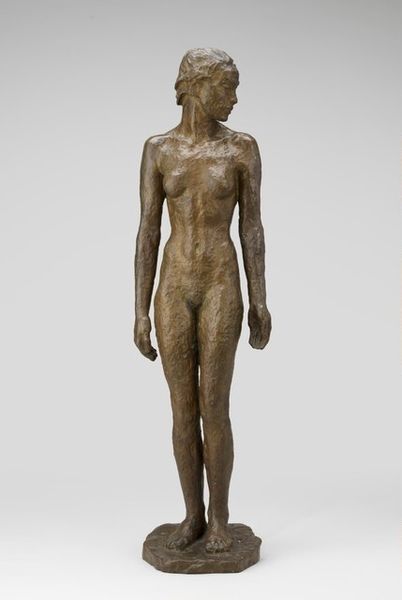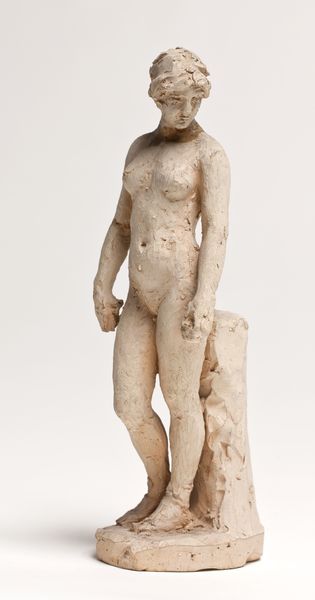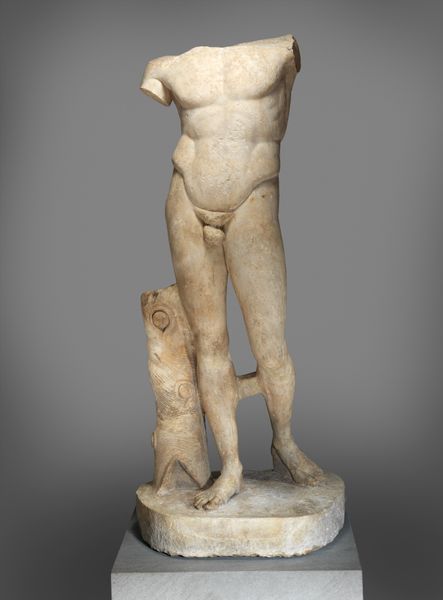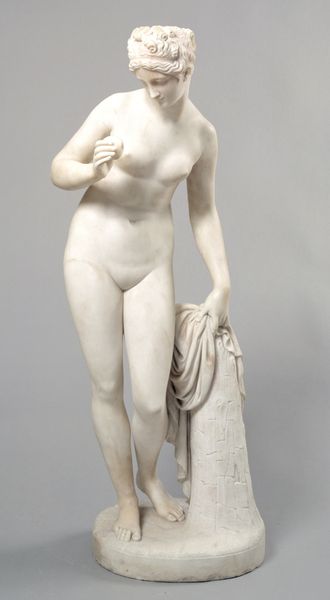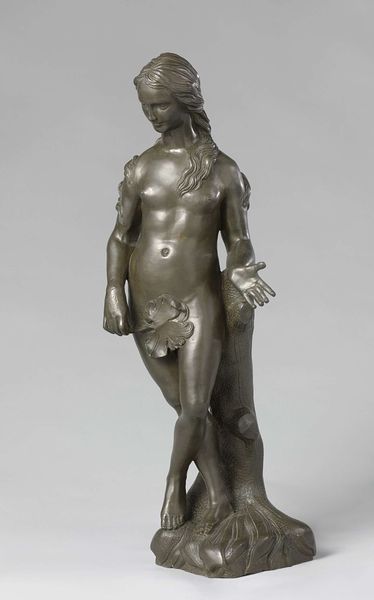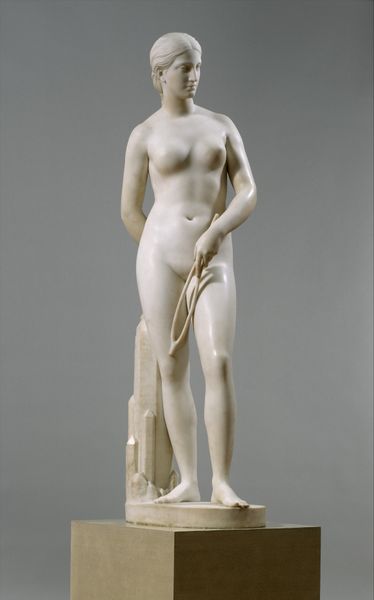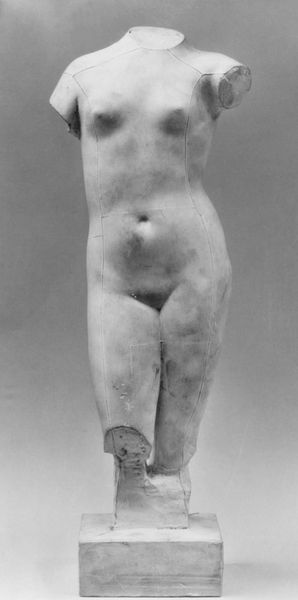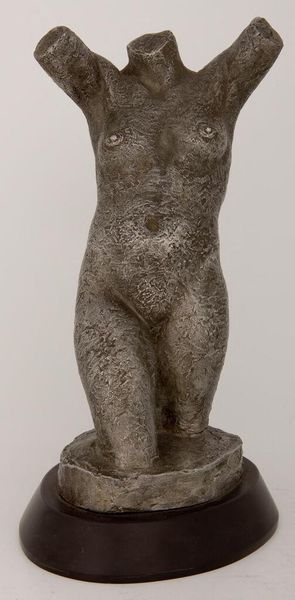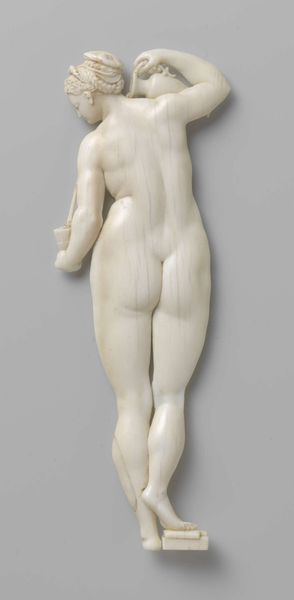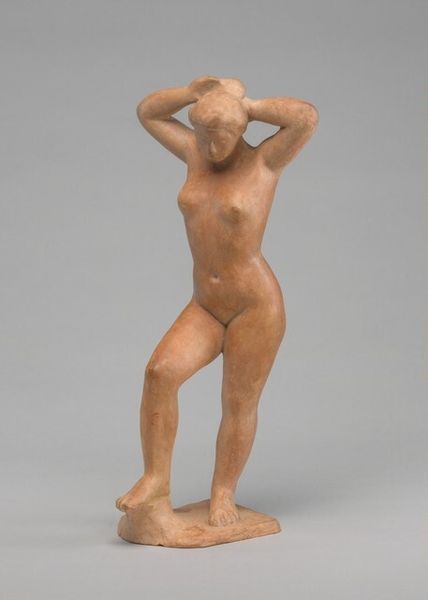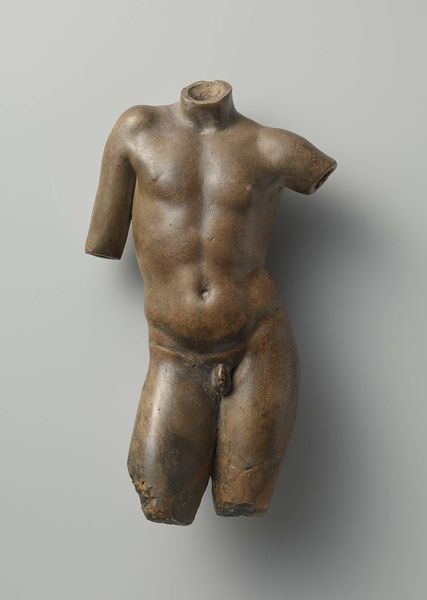
carving, sculpture
#
portrait
#
carving
#
classical-realism
#
sculpture
#
nude
#
modernism
Copyright: Public domain
Curator: Standing before us is Charles Despiau's 1937 sculpture, "Assia." Editor: The first thing that strikes me is the weight of the form. She has a solidity and stillness, almost earthy, despite her nudity. What material is it? Curator: It’s a carved stone sculpture, placing it firmly in the classical tradition while nodding toward modernist sensibilities. Despiau was deeply influenced by the direct carving movement, celebrating the material’s inherent qualities. There’s minimal surface polish, allowing the tool marks to remain visible. Editor: The choice to leave those tool marks speaks volumes. It underscores the labor, the physicality, the deliberate process of the sculptor, bringing a modern sensibility. The slightly rough texture also lends a sort of humble honesty to the work. Does the pose hold any symbolic weight? Curator: It certainly does. The contrapposto stance, derived from classical sculpture, suggests both stability and potential movement, a balance between repose and readiness. Her gaze turned slightly away creates an air of contemplative introspection, suggesting a complex inner life. Also, the classical theme of the nude links "Assia" with enduring ideals of beauty and the human form that are ingrained within Western art. Editor: So the viewer engages not just with Assia as an individual, but with centuries of cultural interpretation of the female form. But isn't she also subtly resisting those traditional ideals? There's a certain groundedness here, a deliberate lack of idealization compared to, say, a classical Aphrodite. It is, dare I say, very modern in that approach, which invites discussion about social ideals about women and how it should look. Curator: Exactly. She embodies a shift towards a more realistic and accessible representation of the human body. There is some roughness from where the chisel made contact. Despiau gives prominence to the way we make things and consume these visuals with his deliberate modern realism. Editor: Seeing the raw materiality of the piece combined with such an archetypal form, it almost creates a poignant tension, and ultimately emphasizes our relationship to our own humanity. Curator: It does makes me consider all of the subtle interactions in our culture, how artists both use tradition to build art, yet always challenge them in certain manners.
Comments
No comments
Be the first to comment and join the conversation on the ultimate creative platform.

